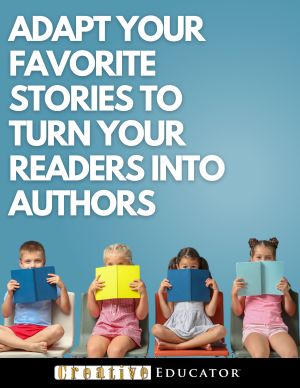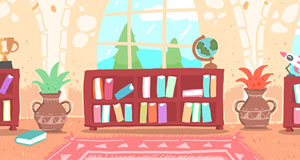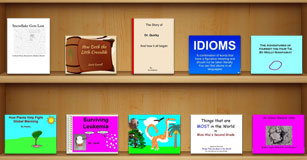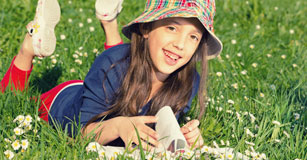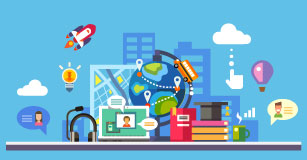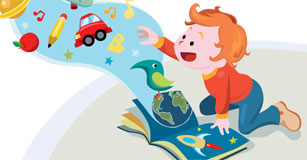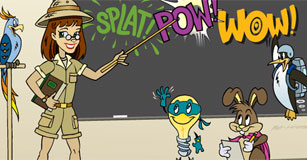Math + literature = success!
Children's books about math that make for great writing project that build number sense, counting, and other powerful math understandings.
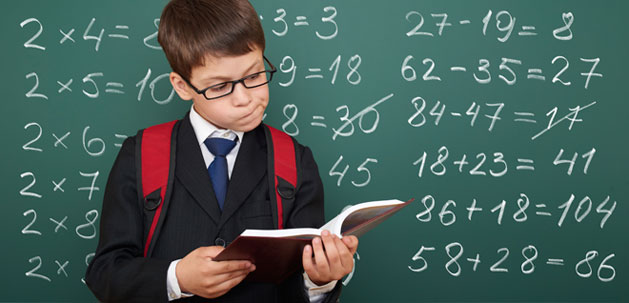
Combine amazing children's literature with math. Use this list of books to engage students in creative project work that combines reading, writing, and math.
The Greedy Triangle. Marilyn Burns
Have students write their own story about a geometric shape. Using the ideas in the book, encourage them to make connections to where the shape is found in the real world.
Ten Black Dots. Donald Crews
In this fun story, the reader sees dots incorporated into objects, as they count from one to ten. For example, "2 dots can make the eyes of a fox, or the eyes of keys that open locks."

Students create and count a number of black dots, arranging them and creating supporting illustration to transform them into an object. Using the ideas in the book, encourage them to make connections to where the shape is found in the real world.
The Grouchy Ladybug by Eric Carle
Have students tell their own grouchy animal story over the course of a single day to demonstrate their understanding of elapsed time.
The Math Curse. Jon Scieszka
Have students write their own stories about the problems they encounter during a typical school day or the problems encountered by a fire fighter, police officer, doctor, etc.
The Shape of Things. Dayle Ann Dodds and Julie Lacome
Have students compose images from 2 dimensional shapes and complete a sentence that describes their composite to create their own version of the book. (lesson plan)

Math Fables. Greg Tang
Have students create their own counting fable using scenes and characters from familiar stories they have read. Print their stories to place in classroom library.
Bunches and Bunches of Bunnies. Louise Matthews
Explore multiplication with this fun book. Then, have students combine artwork and text to write their own multiplication stories.
Five Creatures. Emily Jenkins
Have students write and illustrate their own Five Creatures story using the members of their family. Print the files as a booklet to take home or export as an HTML storybook.
The Best of Times. Greg Tang and Harry Briggs
Have students create their own simple rhymes to help them memorize basic facts. Students may use stickers and paint tools to illustrate each rhyme.
Math for All Seasons: Mind Stretching Math Riddles. Greg Tang and Harry Briggs
Have students create their own unique counting book with patterns using stickers and pictures. Student may publish their stories as short movies to share with others.
Polar Bear Math: Learning about Fractions from the Klondike and Snow. Amy Whitehead Naqda and Cindy Bickel
Have students choose a daily concept like making lunch or time spent on homework to illustrate daily fractions found in the day. Student can create an HTML project to share with others.
Full House: An Invitation to Fractions. Dayle Ann Dodds
Have students write their own fractional stories. Support them by giving their stories a context you can work together to explore such as a Halloween activies or springtime. (lesson plan)
The Grapes of Math. Greg Tang
Have students write and illustrate their own math rhyming riddles. Combine all of the class riddles into one book and export to HTML to share online.

Marvelous Math: A Book of Poems. Lee Bennett Hopkins and Karen Barbour
Have students create their own math limerick poem for students to share. Compile each student’s poem as a class book.
Pigs Will Be Pigs. Amy Axelrod and Sharon McGinley
Have students create their own comic strip using basic money concepts for counting and making change. Other books in this series can help students explore math through travel, cooking, sports, and more!
Last to Finish: A Story About the Smartest Boy in Math Class. Barbara Esham, Mike Gordo and Carl Gordo
Have students create a step-by-step guide for problem solving. This guide could be shared with others for future problem solving situations.




